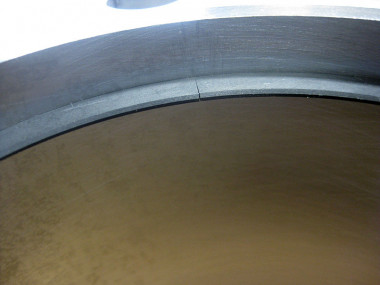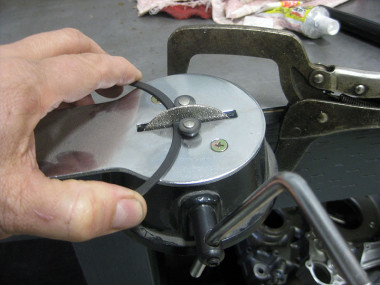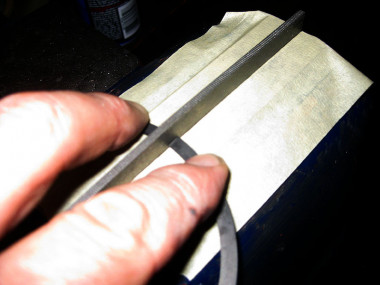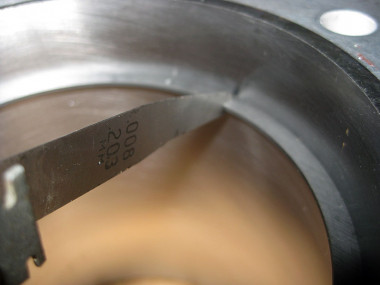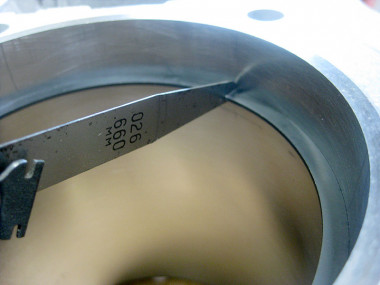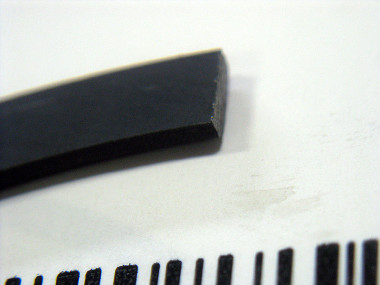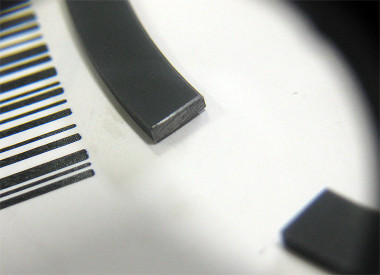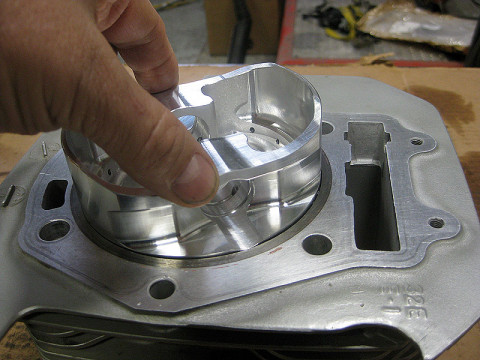
When installing new piston rings it is very important to check the ring gaps and make adjustments if necessary. OEM rings will have a gap specification that can be found in the factory service manual. Aftermarket rings will usually come with a formula to calculate the minimum gaps. Today we're setting ring gaps on a 790cc big bore kit for a DR650. The ring manufacturer gives us this information for checking ring gaps.
| Application | Top Ring | Second Ring | Oil Ring |
|---|---|---|---|
| Street / Hi Performance | Bore x .0045" | .004" - .008" Bigger than top ring | Min. .015" Do not file |
| Drag Racing / Road Racing | Bore x .005" | .004" - .008" Bigger than top ring | Min. .015" Do not file |
| Nitrous / Turbo / Supercharged | Bore x .0055" | .004" - .008" Bigger than top ring | Min. .015" Do not file |
This bike isn't going to be a drag racer or run a turbo or nitrous so we'll use the top spec which is .0045" of gap per inch of bore. The 790 cylinder bore is 4.358" so when we multiply the bore times the gap spec we get .0196" - call it 20 thousandths - .020". This would be considered a minimum nominal gap for the top ring. Could it be a little tighter? Sure but not much. How about if it's too big? You probably wouldn't see any ill effects unless the gap was more than twice the specified amount. So if you're gapping your rings and go a little too far don't sweat it. It's much better to be a little loose than too tight. If the gap is too tight they can bind in the cylinder from heat expansion. Any binding will cause immediate engine damage.
The first thing to do is place the top ring in the cylinder to measure the gap. Use the piston to push the ring down and insure that the ring is sitting square in the cylinder.
Here's our ring sitting in the cylinder. Not much gap to be seen is there? I can't quite even get a .003" feeler gauge in there.
If this ring was installed the way it is it would bind up as soon as the motor got up to operating temperature.
The end result would be ugly. This will definitely need some attention.
If you can beg or borrow a ring grinding jig the job will be easier. You want to hold the rings flat and square so the gap ends are parallel to each other.
If you can't find a grinding jig you can use a file. Using a file means you will have to pay closer attention to keep the ends square.
Take a little off at a time and check the gap. It's easy to go too far. Here we have a gap of .008". Got a little way to go.
Here's the second ring after filing the gap. The gap specs say the second ring should be .004"-.008" larger than the top ring. This measures out at .026" which is .006" larger than the .020" where we set the top ring.
Filing the ring leaves a tiny burr on the end. It's hard to see but you can easily feel it with your fingers. This burr will prevent the rings from sealing properly. It has to be removed.
Using a honing stone carefully smooth down the burr leaving a tiny chamfer on all edges.

